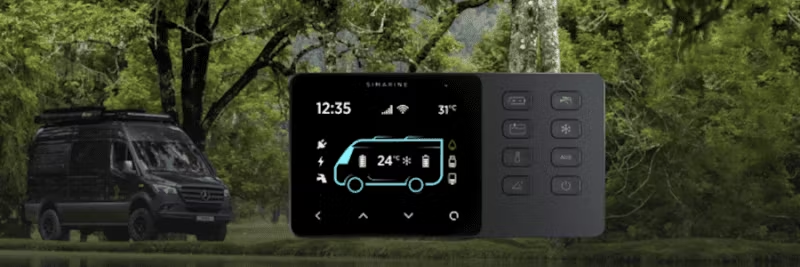Cart
Discount: 0.00 EUR
Discount: 0.00 EUR
Digital Skipper |13/08, 2024

Simarine VIA is a customized solution for Digital Switching and monitoring of motorhomes, campervans, and caravans. The system combines appliance control with advanced battery and sensor monitoring for complete energy management.
The name Via means road or route – perfect for a system designed for adventures on the road. The Via system consists of two main components:
For smaller projects, the basic system is sufficient, while larger installations can be expanded with expansion modules such as SC303/503, ST107, or SCQ25 for more functions.
The SPDU52 measures current via a dedicated shunt for the main battery. For accurate monitoring, all devices should be connected via the relays, with the exception of the MPPT controller and charger which have their own outlets. The basic system supports one 12V battery, but with expansion modules, you can monitor more batteries and higher voltages.
Two separate outlets with isolated shunts provide individual monitoring of chargers (max 40A) and solar energy (max 16A).
The SPDU52 has 4 resistance inputs and 2 voltage inputs for tank levels, temperatures, and customized sensors. In addition, there are two exclusive 4-stage tank level sensors.
With 6 relays, you can control 12V devices such as water pump, refrigerator, and heating. Each relay can be configured via the panel for easy control.
For larger projects where the current exceeds the SPDU52's limits (50A for battery, 40A for charger, 16A for solar energy), you can use an external high-current shunt like the SC303. For individual monitoring of multiple devices, SCQ25 or SCQ50 modules are recommended.
The SPDU52 monitors the voltage of the starter battery and is prepared for future functions such as charging the starter battery via AC charger and solar energy.